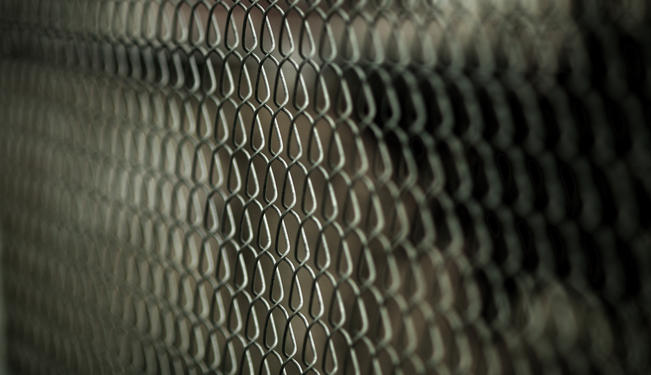The US government has created a “law-free” custodial environment at Guantánamo Bay. This is the first of a two part series.
Much has been made of the US government’s detention policies in furtherance of its so-called “War on Terror,” particularly as those policies are implemented at the prison camps of Guantánamo Bay. Most discussions of the prison camps involve descriptions and discussions of what has happened, what is happening, and conjecture as to what may happen. Less frequently discussed is what is arguably the most important subject of discussion: Why? This article discusses that question from both a military and political perspective.
The US government, using World War II-era legal precedents and transparently utilitarian justifications, initially sought to create a “law-free” custodial environment at Guantánamo Bay wherein it could do as it pleased at the various camps that constitute the detention facility at the base, both with respect to the detainees’ detention without trial and with respect to their treatment while detained. The transparent purpose behind the government’s effort to create this “law-free” zone was to ensure that it exercised complete control, not only of the detainees and their detention, but also of the narrative presented to the world regarding the detainees and the threat those detained there purportedly posed.
In a series of what have ultimately proven to be ineffective and arguably deleterious court decisions, the American justice system attempted to appear to rein in the US government’s extra-legal approach to the detainees’ detention and treatment. While some detainees have, in fact, been released, the practical effect of these releases has been to create a worldwide misperception about the current legal status of the remaining detainees and the Washington’s intentions with respect to them.
At this stage, the US government and the detainees have apparently reached an impasse, resulting in, among other things: an ongoing and large-scale hunger strike by many of those remaining at the camps; President Barack Obama’s apparent inability to close the facility, if that was ever a realistic goal; and the stigmatization of the detainees to the point where it appears that efforts to resettle them in foreign lands are frustrated by the government’s inability to identify countries willing to admit them.
One cannot meaningfully discuss how we have gotten to this stage, where some detainees have been held for over ten years without trial, without first understanding why the US government aggressively fought for this “law-free” zone — ironically located in a country with a well-earned reputation for repression, tyranny, and flagrant disregard for the most fundamental of human rights.
In order to understand Washington’s motives behind the creation of this “law-free” zone, one must first comprehend the nature of America’s War on Terror, how it is being fought and, most importantly, why it is being fought and why it is being fought the way it is.
The War on Terror is, in many ways, unique and arguably unprecedented. First, with al-Qaeda and the US government’s public relations use of it notwithstanding, there is no, and really can’t be any, identifiable enemy, which eases Washington’s ability to target enemies on an ad hoc basis and to substantiate its claims of existing threats without meaningful factual support or democratic oversight.
Second, the nature of the War on Terror permits the US government to employ tactics that are not only ineffective, but also arguably counterproductive, at least from a national security perspective.
Finally, because of the vast expansion of the use of classified material by the national security apparatus of the government during the War on Terror, any meaningful ability to impose democratic review and oversight over the war’s necessity and conduct has been rendered, for all practical purposes, non-existent.
This disquieting American national security reality raises the question of just how is it that we got here?
It is the answer to this question that leads to an understanding of why the US government created the detention facility at Guantánamo Bay and why the government felt it so necessary to do so in a “law-free” manner. In short, the answers to these questions are directly, and inextricably, related to the nature of the War on Terror and the war’s true purposes — none of which are to ensure America’s national and societal security, as the government’s War on Terror is, at its essence, a war of aggression.
*[Note: Read the final part on September 18.]
The views expressed in this article are the author’s own and do not necessarily reflect Fair Observer’s editorial policy.
Image: Copyright © Shutterstock. All Rights Reserved
Support Fair Observer
We rely on your support for our independence, diversity and quality.
For more than 10 years, Fair Observer has been free, fair and independent. No billionaire owns us, no advertisers control us. We are a reader-supported nonprofit. Unlike many other publications, we keep our content free for readers regardless of where they live or whether they can afford to pay. We have no paywalls and no ads.
In the post-truth era of fake news, echo chambers and filter bubbles, we publish a plurality of perspectives from around the world. Anyone can publish with us, but everyone goes through a rigorous editorial process. So, you get fact-checked, well-reasoned content instead of noise.
We publish 2,500+ voices from 90+ countries. We also conduct education and training programs
on subjects ranging from digital media and journalism to writing and critical thinking. This
doesn’t come cheap. Servers, editors, trainers and web developers cost
money.
Please consider supporting us on a regular basis as a recurring donor or a
sustaining member.
Will you support FO’s journalism?
We rely on your support for our independence, diversity and quality.








Comment